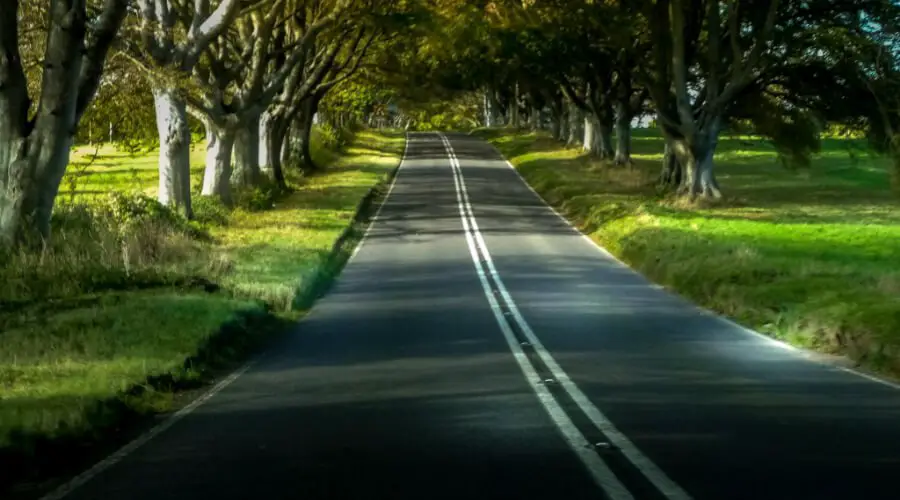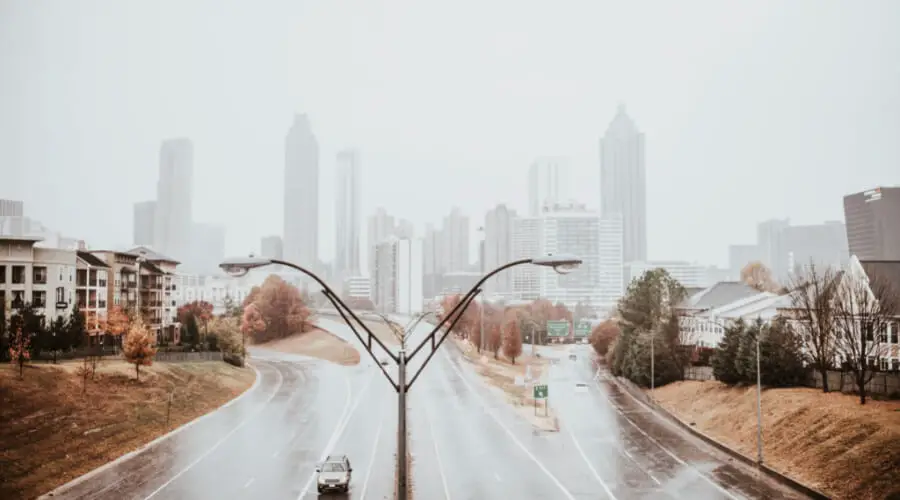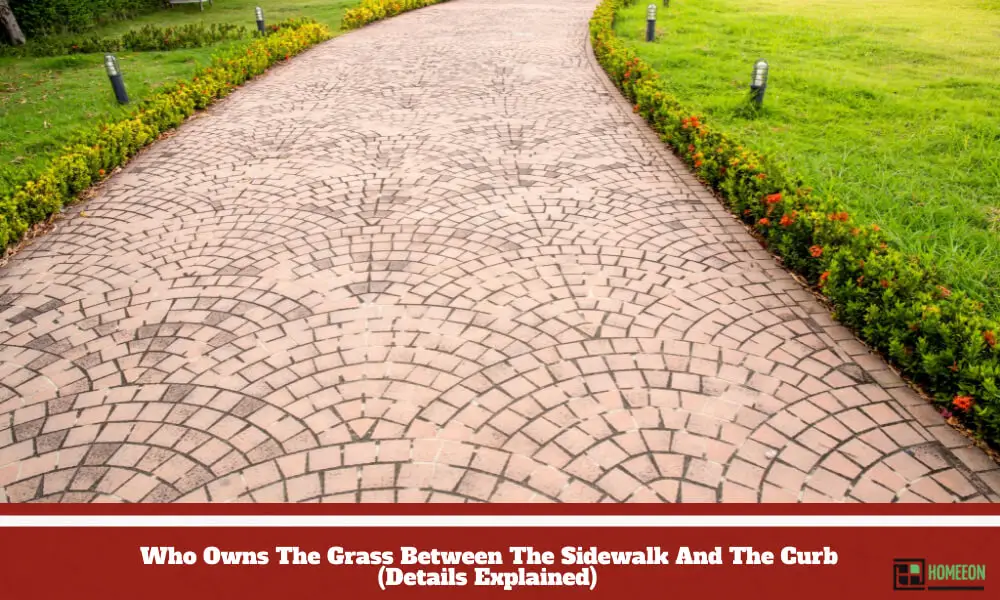Last Updated on July 30, 2023 By Emma W. Thomas
The land between the curb and sidewalk usually belongs to the public. But, it is the municipal’s responsibility to maintain this property. Some local authorities may require a property owner to take care of the grass in their respective area, including the sidewalks and adjacent footpaths.
Who Owns The Grass Between The Sidewalk And The Curb?
The strip of grass between the sidewalk and the curb, often referred to as the “parkway” or “city strip”, is a common point of confusion for property owners. While it may be part of the property parcel, there are often shared responsibilities and guidelines in place between homeowners and the city:
- Ownership by the City:
- In many cities, the grass between the sidewalk and the curb is technically city property. This means that the city holds the ultimate rights to the land and has the power to regulate its use.
- Despite it being city property, residents are often obliged to maintain this area.
- Maintenance by the Homeowner:
- Even though the city might own the land, the responsibility for upkeep generally falls on the homeowner. This includes mowing the grass, keeping the area free from litter, and occasionally watering depending on local laws.
- Homeowners are often bound by city ordinances or homeowners’ association rules that dictate the maintenance of this area.
- Landscaping and Planting:
- While homeowners are expected to maintain the grass, alterations or enhancements such as planting flowers or installing sprinkler systems might require permission from the city.
- Any large changes, such as installing a driveway or walkway across the grass, almost certainly need the city’s approval.
- Liability:
- Homeowners might be held liable for any accidents or damage that occur in this area. This is especially true if any negligence on the homeowner’s part, such as unmaintained sidewalks or overgrown vegetation, leads to an accident.
| City | Homeowner | |
|---|---|---|
| Ownership | Yes | Sometimes |
| Maintenance | Typically No | Usually |
| Landscaping and Planting Permission | Yes | Depending upon the city |
| Liability | Typically No | Usually |
While specifics may vary from city to city, these are the common rules that typically apply to the strip of grass between the sidewalk and the curb. For any doubts or queries, it’s always a good idea to reach out to your local city zoning department or homeowners’ association.
Whose Responsibility Is It To Maintain The Grass Between The Sidewalk And Curb?
In the majority of locations, the upkeep of the space between the sidewalk and curb, often termed the “sidewalk strip” or “hell strip,” falls upon the adjacent homeowner. However, it’s crucial to note that regulations may vary in different cities or subdivisions, so it’s always a good idea to check with local authorities.
Here are several critical points to consider:
- Responsibility of the Property OwnersAs a general rule, homeowners or property owners are expected to maintain the public right-of-way bordering their property, even though this area is technically not part of their parcel.
- The homeowner’s responsibilities typically include trimming the grass, removing snow or debris, maintaining trees and shrubs, and ensuring that sidewalks are clean and secure.
- City or Municipality’s InvolvementIn some cities, the local government assists with tree maintenance or removes damaged sidewalks in this area—but again, rules vary.
- For example, some municipalities take on the cost and responsibility for planting trees
- Others may handle the job but bill the adjacent homeowner for the cost.
- Homeowners Association GuidelinesIf you live in a community managed by a homeowners association (HOA), there may be additional rules.
- The HOA might dictate the type of plants you can use, how high they can grow, or how often you have to water or mow.
- Public InvolvementIn several Regions, residents share the responsibility of maintaining these spaces with the local government or HOA.
- Such collaborations are often aimed at promoting public safety and maintaining the neighborhood’s aesthetic appeal.
- Liability IssuesLiability is another issue the homeowner must consider.
- If a pedestrian trips over uneven pavement or slips on icy patches on a sidewalk that the homeowner is responsible for maintaining, the homeowner might be held liable.
| Responsibilities | Who’s in Charge |
|---|---|
| Mowing the grass | Homeowner |
| Removing snow or debris | Homeowner |
| Planting trees | May vary depending on local regulations |
| Removing damaged sidewalks | May vary depending on local regulations |
| Deciding types of plants | Could be dictated by HOA |
| Liability over pedestrian accidents | Often the homeowner |
What Is A Road Verge?

A strip of grass or plants between the roadway and a sidewalk (pavement) is referred to as a road verge. A person who owns a property adjacent to a curb does not own it but can dictate how the city and pedestrians will use it. An owner is expected to repair and maintain this space, and a person that gets injured on uneven pavement may sue the owner.
How Can You Maintain A Road Verge Which Surrounds Your Private Property?

Maintaining a road verge (nature strip) is essential as it improves the appearance of your street. This space is crucial since it allows;
- Pedestrians to move safely past your property
- Cyclists and vehicles to see clearly as they ride and drive past your property.
A road verge may consist of a garden, footpath, street trees, and turf. Most properties have road verges on the front side, but some may have them all around. Such homes are usually on a corner block, or they have private access on the rear side, for example, commercial, terrace homes, or light industry business areas.
Sometimes the municipal authorities may support property owners to install turfs and remove garden beds at their costs. Doing this makes the maintenance of the spaces to be easy. However, the council does not interfere with maintaining verges that surround commercial, private, council-leased, or industrial properties.
You can maintain your road verge by;
- Slashing, watering/edging of turf, mowing, or hand weeding
- Watering the street trees that are within the road verge
- Pruning/trimming, hand weeding or watering, a garden within your property’s road verge
When Can The Council Participate In Maintaining A Road Verge?
It is the council’s responsibility to ensure that there is a smooth and safe flow of vehicles and pedestrians. Road corridors need to be functional, secure, and accessible to the community, and the council can maintain road verges in;
- Facilities that include public swimming pools, buildings, recreation grounds
- Public reserve places including bushland, foreshores, beaches, gardens, and parks
- Surrounds and roundabout centers
- Central business districts
- Road verges that adjoin the rear of buildings with no immediate access
- A place that is risky for residents to carry out maintenance such as steep verges
- Median strips
What Are The Benefits Of Street Trees?
Street trees can increase the value of your property when you keep them in good condition. They have both social and aesthetic benefits, which include;
- Provision of shade and cooling
- Screening, softening, and enhancement of environments.
- Improving the quality of air
- Reducing stormwater and filtration
- Provision of food and habitation for wildlife
- Trees also provide privacy to a property
How To Maintain Street Trees
Several ways contribute to the maintenance of street trees, including;
Watering The Trees
In any street tree establishment, watering plays a significant role, and you can do it this way;
1. During the months following planting, water needs to be applied directly to the root balls. If the trees are grown in containers, this watering is crucial because the roots dry out quicker than the soil surrounding them. Before the tree roots spread into the soil around them, they will draw water from the root ball for them to thrive.
2. Whenever there is no good rain, and during the summer peak, the trees need watering a least twice per week. Applying deep soakings is preferable to light watering as this helps in the establishment of deep roots.
3. Avoid watering during the day when it is hot to prevent evaporation. Instead, do it early in the morning or when it is already dark.
4. It is necessary to apply a lot of water to new trees to keep the soil around them soaked and prevent their drying up. You can feel the layer of soil below the mulch to determine if they need more water. If the soil is dry, apply more water.
Application Of Mulching
Mulching helps to prevent the growth of grass and weeds that compete with the trees for essential nutrients. Grass can take in about 30% more water than tree roots when allowed to grow, and you, therefore, need to uproot it. Mulching is also essential in improving soil quality, conservation of moisture, and protection of tree trunks. Tree trunks may suffer injuries when one is using whipper snippers and mowers.
Council opts for organic mulch since it is a better option for tree plantings. It is essential to avoid piling the material too high while mulching as this may hinder the air from passing to the roots. An ideal layer should not be more than 10cm. Leaving a small gap between the mulch layer and the tree trunk is also necessary to prevent the stem base from rotting.
Grass clippings should be avoided when mulching trees since they can be toxic due to their high nitrogen content. Young trees could die as a result of high grass clippings piles.
Staking The Trees
Staking is crucial as it gives new trees the support they need before forming roots that then spread into the soil. This process is also helpful in protecting the trees from accidental destruction by equipment. The council usually removes these stakes 12 months after planting, and those trees that cannot support themselves are replaced with new ones.
Pruning
The council usually prunes young street trees to help them develop good form. This process is also necessary for;
- Removing damaged or dead limbs
- Getting rid of the lower branches and giving clearance over footpaths. Doing this makes it possible for pedestrians to move freely and also provides visibility for the traffic.
- Eliminating suckers that shoot from the base of the tree trunk
- For removing structural faults
Can You Clear Vegetation On A Nature Strip (Road Verge)?
Sometimes the council may permit in writing to remove vegetation on a road verge. You may get a permit when you want to build, renovate, or construct a driveway. Most road verges consist of footpaths, grass, or street trees. The council improves liveability, natural assets, and environmental credentials by preserving street trees and road verge amenities.
As the council approves vegetation clearing permits, they will ensure that the community’s safety and the functionality of the road verge are not compromised. The sewerage, telecommunication, water, and power located within the road verges need not be interfered with during the vegetation-clearing process. You need to follow the steps below;
Application For A Permit
The council may grant a permit to remove street trees or vegetation seen as low value, but each application is assessed differently. One is required to pay a permit application fee that is non-refundable. However, the council may deny you the permit under the following circumstances;
- If damaging the vegetation will be a risk to the environment or the general public.
- If one is clearing the vegetation for aesthetic reasons or views
- If the clearing is for creating car parking on the road verge
- If the foliage is assessed as medium to high value.’
One can apply for the permit through the council’s customer service center or online, and there is a need to provide documents and prove the sustainability of the proposed work. A licensed council officer may visit the site if need be. Depending on the extent of the work, it may also be necessary to apply for a bond. But, you will not pay for the bond until the assessment and approval of your application.
For your application to be considered, you need to include;
- A filled Permit Application form
- vegetation damage or clearing application fee (the fee is non-refundable)
- A notification for Dial Before You Dig (this notification is for those activities that require machinery)
- A proof of public liability insurance (this should not be less than $2 million)
If your application does not go through, you need not pay for the bond. However, you will not get back your permit application feed.
Bond Application
You may require to apply for a bond to cover any damage to existing vegetation or infrastructure if your application is successful. But, this will depend on the extent of the work, and it is quoted during the assessment of your application. You will not get the permit unless you pay the applicable bond in full. This bond is refundable;
- Upon the completion of the project
- When you submit photos of the completed works
- The council assesses and certifies that there is no damage to the existing infrastructure or vegetation beyond what was allowed.
Dial Before You Dig
The council encourages you to ‘Dial Before You Dig,’ a toll-free service that gives you information on the available underground utilities. Doing this will help you to avoid causing unnecessary damage.
Wrapping It Up
Although the grass between the sidewalk and the curb belongs to the public, the municipal’s responsibility is to maintain it. But, an individual whose property adjoins this area may be required to take care of it. Keeping this space improves the appearance and value of the adjacent properties, and property owners need to be responsible.
References:
https://renovatecentral.com/does-a-homeowner-own-the-grass-patch-between-the-sidewalk-and-the-curb/
https://www.gfloutdoors.com/who-owns-the-grass-between-the-sidewalk-and-the-curb-anyway/
Emma is a graduate of Domestic Science or Family and Consumer Sciences (Home Economics) from the University of Wisconsin. She has 7 years of experience Working with the strategic section of BestBuy and now writing full-time for Homeeon.
From Managing the Home, Interiors, Cleaning, and Exteriors to Gardening and everything about Making A Home Liveable – is her passion and this Homeeon is the result of this.
Emma loves decorating her home with the best stuff found online. She cares about quality over anything and writes reviews about them here in Homeeon. Get in touch with her over Pinterest.
Keep reading her blogs.

